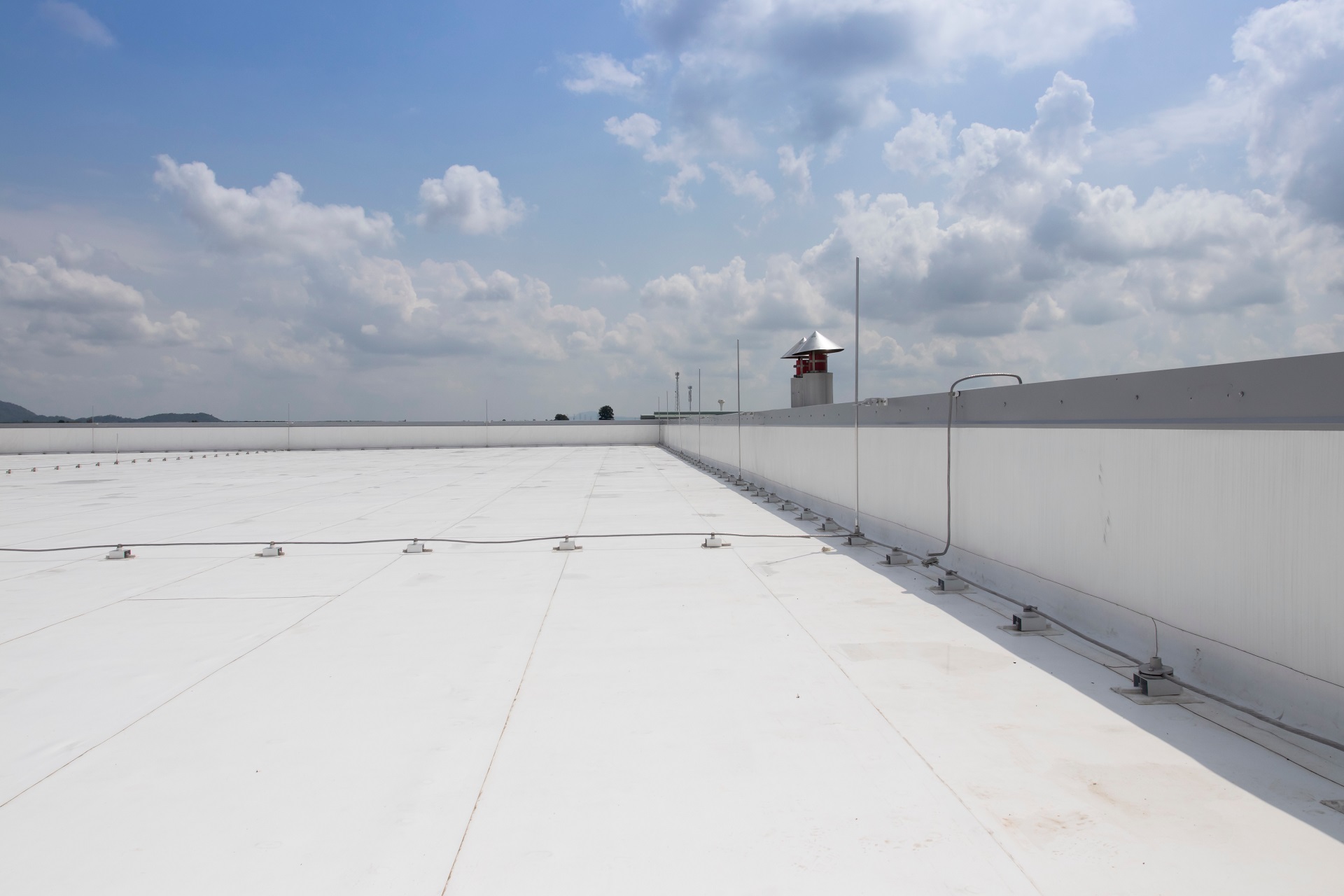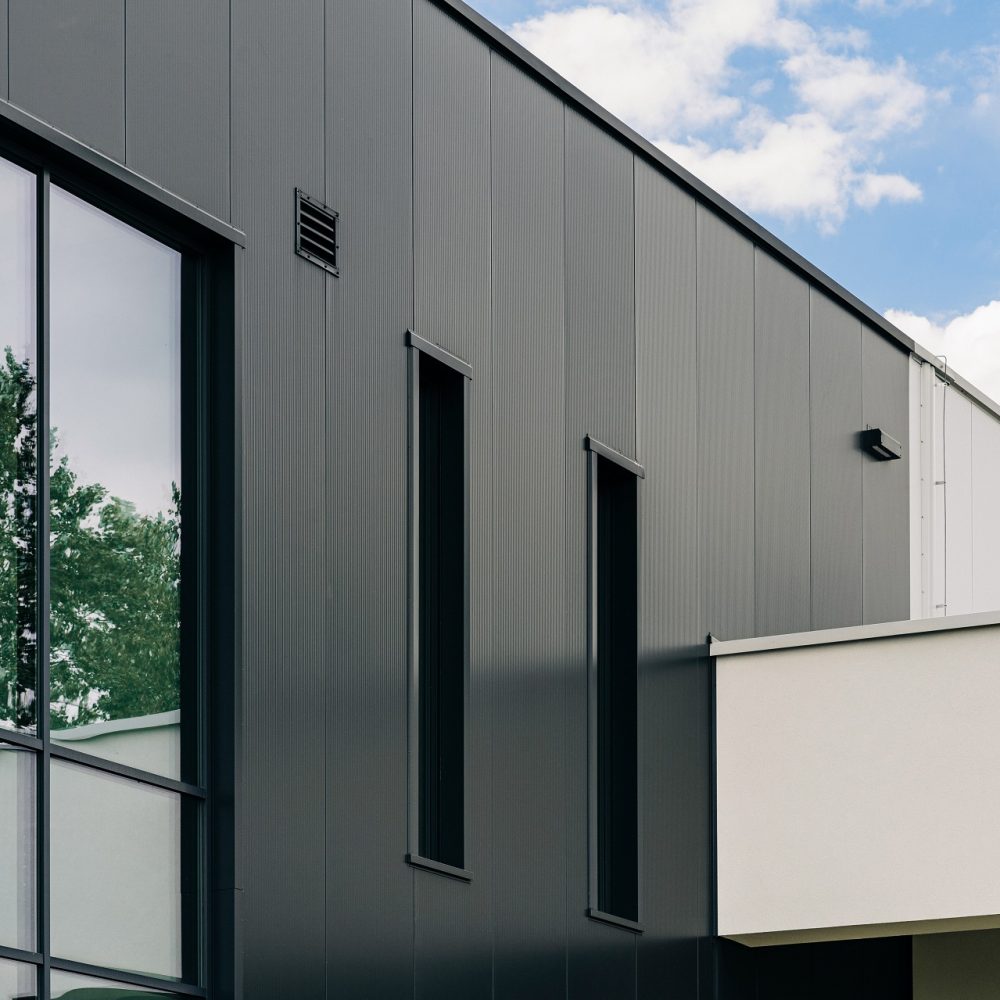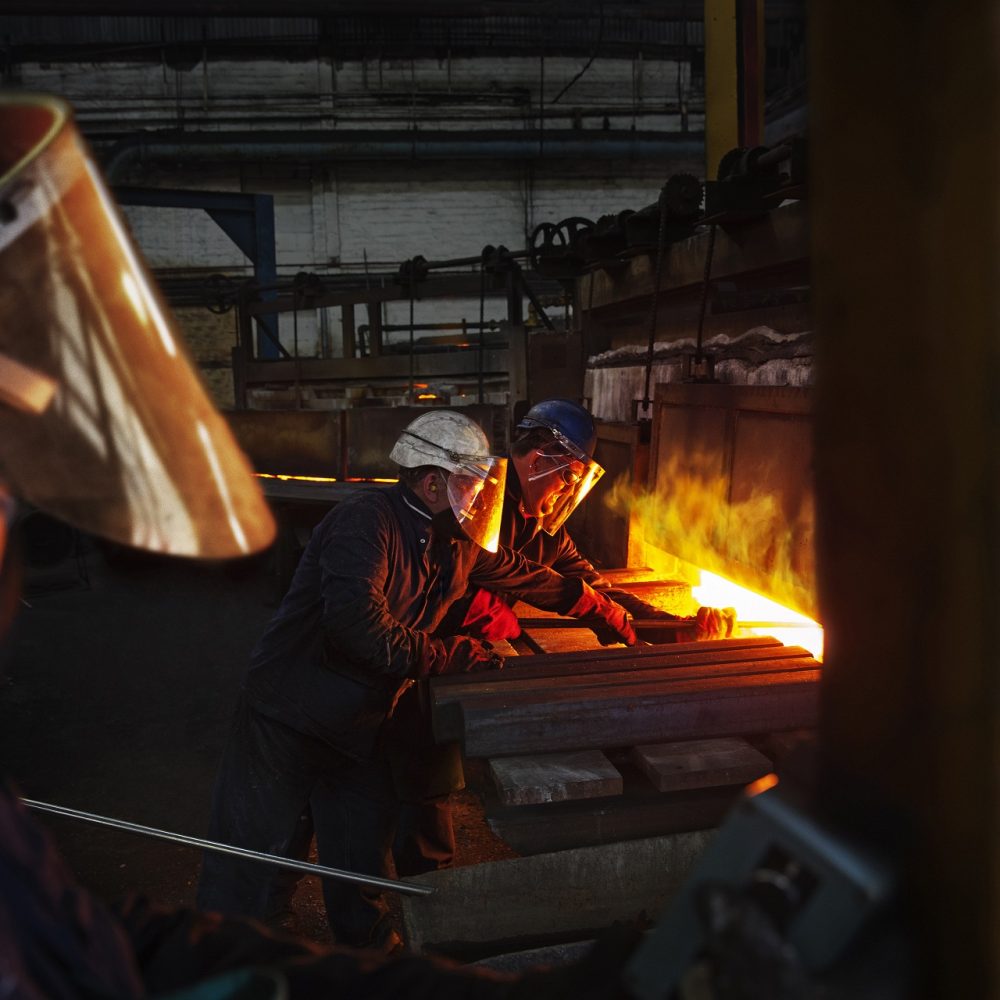
Any violent weather phenomena, such as a thunderstorm, most often cause anxiety and fear for one’s own life and property. Therefore, there is no builder who is not faced with the important consideration of installing a lightning protection system for a steel hall. Unfortunately, in the event of a lightning strike, one has to reckon that it can cause enormous damage, so it is worth taking precautions for such contingencies. Lightning protection systems are installed to minimise the risk of potential losses. Is it worth to do? Definitely yes, because the cost of such a measure is always at least several times less than the cost of rectifying problems caused by sudden electric discharges. Moreover, in the case of such a phenomenon, you have to expect that it will not only be an expensive but also a time-consuming repair. This can cause downtime for your business, resulting in significant losses and delays in fulfilling obligations to customers and business partners.
Lightning conductor at a steel hall – how does it work?
The main task of a lightning protection system is to intercept the charge accumulated by lightning strikes on the building being protected. Importantly, the process of taking over the load should always take place in a way that is safe for people. At the same time, the hall’s lightning protection and earthing system is intended to ensure the fault-free operation of electronic and electrical equipment and protect it from the negative effects of electrical discharges both from the atmosphere and from the mains as a result of switching surges.
Equipment located on the roof, e.g. air handling units, fans etc., is particularly vulnerable to electrical discharges. Lightning protection masts are most commonly used to protect them. The designer must take these into account when designing the lightning protection system for the hall. Depending on the level of protection, the design also specifies the required distances between discharge fences.
What does the lightning protection system of a warehouse or production hall look like?
A lightning protection system is an assembly of conductive elements in the form of a grid of wires (horizontal interception rods) located on the roof and connected with discharge wires (horizontal interception rods) to an earthing system located in the ground. In the event of a lightning strike, the lightning arrestors allow the electrical charge to safely discharge into the ground, thus protecting the steel halls.
What makes up a lightning protection system? Artificial, natural and discharging earthing conductors. The metal conductors, usually made of galvanised or stainless steel, less commonly copper, on the roof form the artificial earthing conductors. They are laid on concrete bases so that the wire is stretched in the correct way. The metal parts responsible for bringing the charge to the ground are natural conductors. And the wires connecting the horizontal conductors to the earthing system are the earthing leads. It is important that warehouse halls or other industrial facilities equipped with lightning protection systems have earthing conductors of adequate thickness. This thickness is determined by the electrical designer.
Control and measurement joints are also an important part of the lightning protection system. With these, we are able to test the condition of the system. The connectors are installed in a box on the façade or a manhole just outside the façade.
An earthing system, on the other hand, is a system of galvanically connected metal parts designed to dissipate the energy of lightning. These could be, for example, reinforced concrete underground elements of a storage hall such as footings. However, it is not always possible to use them. If this is not possible, what remains is to create a ground ring around the hall, usually in the form of a buried and corrosion-protected cooper strip, or to use a buried earthing conductors in the form of a spike-ended wire that is driven into the ground to a suitable depth. The choice of wire diameter, number and length is then specified in the design of the lightning protection system for the hall.
What to look for when designing a lightning protection system?
The lightning conductor at the steel hall should be properly designed and protected, and should be inspected as part of condition surveys. Sometimes a lightning protection system is not properly made or corrodes after some time. To avoid this, it is important to choose only high-quality components with the appropriate approvals and certificates. All components of the system must be designed and made in accordance with the valid standards and legislation, as failure to comply with any component can have disastrous consequences threatening human life and health. If the lightning protection system is found to have been improperly designed or constructed, acceptance of the building, and therefore its use, will be impossible. Furthermore, in the event of an accident, problems with the installation may contribute to claims by the insurer who might have the right to refuse to pay compensation.



